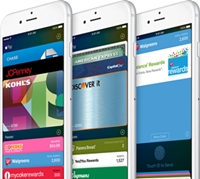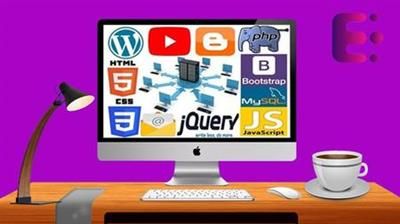Outlook wars – 'hidden costs' of business…
The modern worker receives and sends an average of 121 emails per day. According to the latest forecasts, in 2018. The number will rise to 140*. Email communication is increasingly being compared to a virus spreading through the team and killing our productivity.
In succor come modern solutions available in the cloud – applications for project management, using the idea of social networking.
"Progress has no greater enemy than habit" (José Martí) – in the context of our attachment to the still popular but ineffective work tool email, this statement does not seem to have lost its relevance. Corporate employees send and receive a combined average of 180.7 trillion email messages per day*…and they don't have time to do current tasks. Instead of supporting, the content of the email inbox hinders daily work.
I don't have time – I write back to email…
Email communication has for years reigned supreme on the list of the so-called "instant messages. "time killers". Answering emails has become the dominant "to do" in our schedule, effectively pulling us away from real conceptual work. As the McKinsey Global Institute report shows, employees spend only 39% of their time on the tasks for which they are responsible. Nearly half of their day is spent communicating via email and searching and gathering information they need for… work. The time we spend on current tasks is shrinking, lacking for creative collaboration.
It's no surprise that we so often stay up after hours and take a last look at our work inbox just before going to sleep – notes Grzegorz Gwiazdowski, the originator and co-founder of Klaudra, an interactive platform for project management and work organization.
To be or not to be…on CC
One of the main reasons for the ineffectiveness of email communication as a tool for internal collaboration is the lack of functionality to foster information exchange within the team. Attempts to include a larger group of people in the email conversation generate a chaotic stream of responses and inquiries that don't always hit the needs of the people involved. Seemingly useful in communication options: forward, CC, replay to all rarely used adequately to the real needs and number of addressees, are often abused by employees. The effect?
We receive too much or too little information, (and depending on the situation) we waste time analyzing it or send another e-mail with a query.
Email – the ANTI-social in the age of social
In our private lives, we talk to friends on the phone or use the instant messaging tools that social channels offer us. We come to work and fall into the trap of the anti-social email inbox. The basis of communication and cooperation is the ability to share – knowledge, information, opinion. The pace of life, including work, requires us to do things in real time – we want to know now, we need answers immediately.
The email inbox does not respond to the need for instant communication. Is a place that only its owner has access to. Key data, important findings, important documents and files, instead of becoming a shared asset that facilitates teamwork, linger in our inbox as chaotically scattered puzzles.
Communication without Outlook?
Effective cooperation in a team requires a clear division of responsibilities, efficient exchange of information and documents, as well as the possibility of quick consultation or feedback to our queries. E-mail does not provide us with this. According to Grzegorz Gwiazdowski – Some global companies, seeing email communication as a factor that reduces employee efficiency, decide to take a radical step – banning the use of emails for internal communication.
Studies show that the introduction of tools based on the idea of social networking can increase employee productivity by up to 25%!
To finally crack down on the email "virus," companies are turning to alternative team collaboration tools – cloud-accessible task management apps that offer functionality familiar from daily communication on social channels, such as chat, activity streams and the ability to post comments. Task management apps focus on user convenience and user-friendly interface. I come to work, log in, take a look at my desktop and can start working. I immediately know what tasks are assigned to me, what my colleagues are responsible for and what stage of the project the whole team is at.
I have access to shared files and documents. I can see who is online and can quickly exchange relevant information or invite the team to discuss my ideas. Task management application saves time wasted on traditional email communication.
In addition, the tool is accessible from a mobile device, allowing you to work from anywhere and at any time, according to Klaudr's co-founder.
Work-life balance starts with… emails
As a recent HR industry trends report shows, employees spend 41% of their time on things that don't bring them satisfaction and don't help them do their jobs***. One of them is email communication – a source of daily frustration that grows in us every morning after entering the "received" folder. Modern employees, especially young ones, familiar with technological trends, want to use tools at work that make their lives easier and allow them to communicate with co-workers the way they communicate with friends.
The project management app not only promotes increased productivity of the team, but also increases the quality and comfort of daily work.
The project management tool defines a clear division of duties and responsibilities, thus contributing to greater employee involvement. This reinforces in him the awareness that the tasks he is performing are relevant to the whole enterprise. The success of the project depends on his effective performance, the team counts on him, his opinion is important. Visible progress of cooperation and the possibility of ongoing feedback means greater job satisfaction, which we derive from completing more tasks and jointly developed successes.
Email inbox breeds a sense of overwhelm. Email communication has become a source of stress for employees, a cause of work overload and the need to stay after hours. Modern tools such as project management applications save hours of work lost to email communication or unproductive meetings and use them for creative thinking and…private life. The balance is very simple an engaged, energized team will succeed faster than tired, frustrated employees doomed to use outdated and ineffective communication tools.
Opportunities arising from activities that optimize work logistics open new perspectives in building work-life balance and satisfaction with what we do and how we do it. And this – I believe – is just the beginning of changes for the better… – concludes Grzegorz Gwiazdowski.


